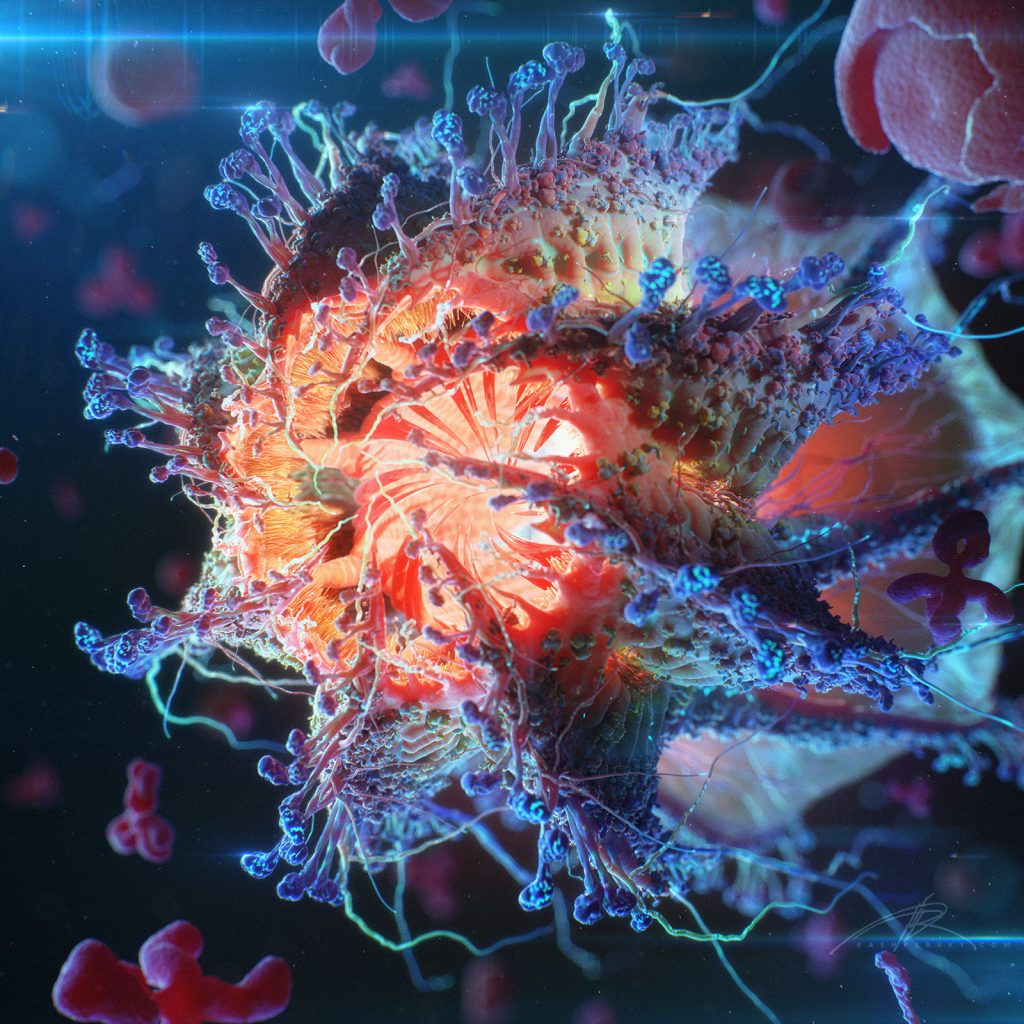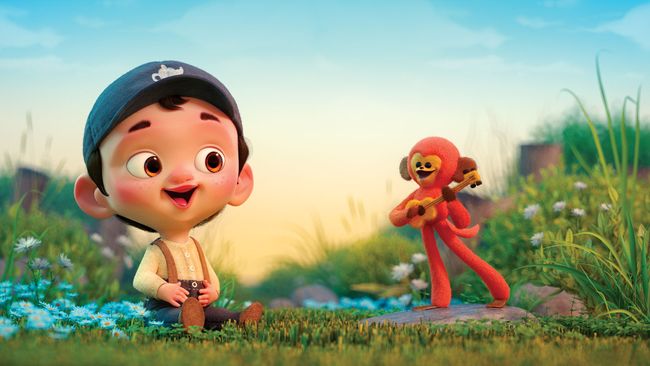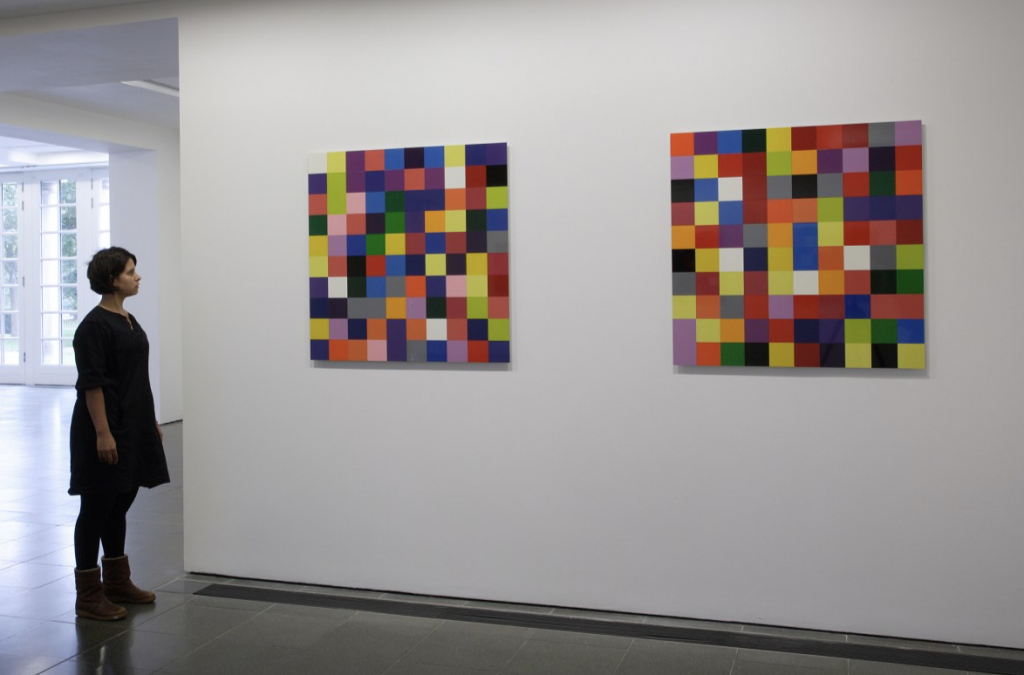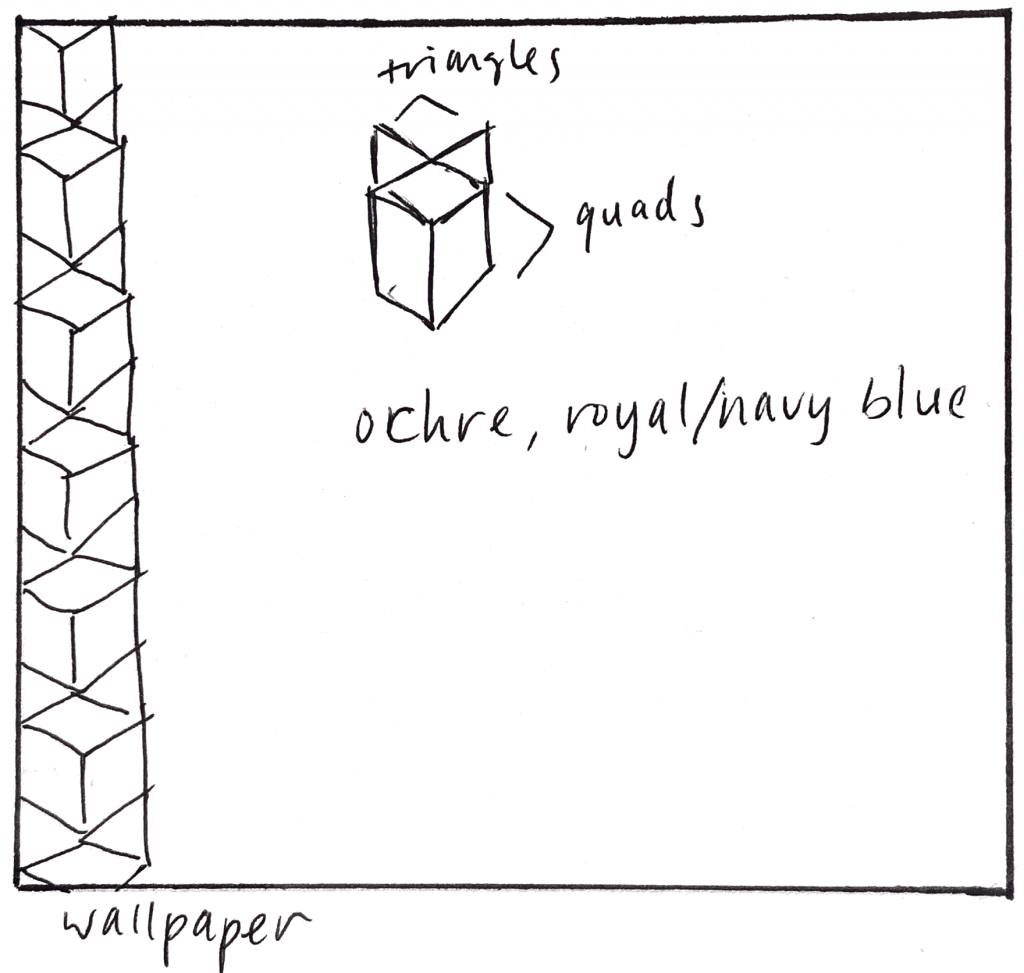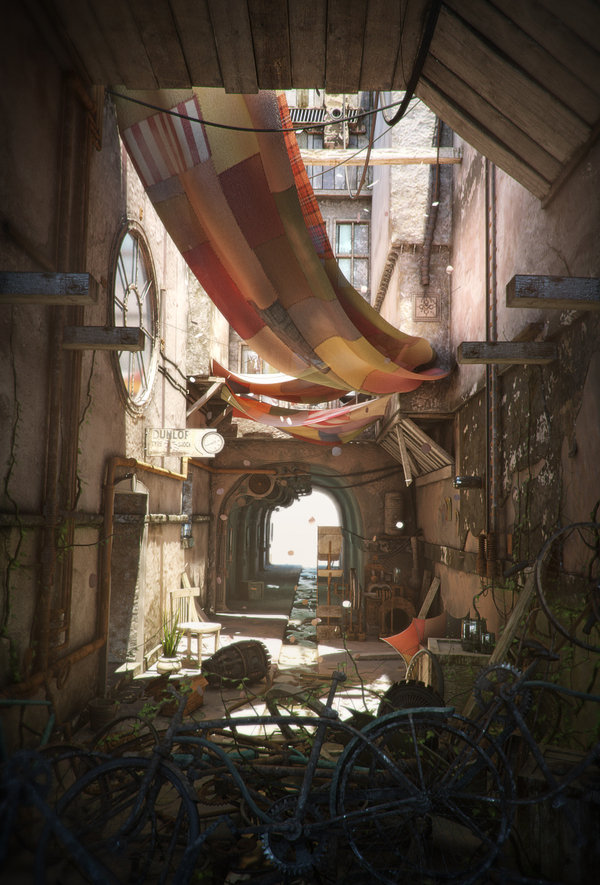
The Race Day is a 3D environment created by Peter Nowacki. Inspired by concept artist Gary Tonge’s Old Backstreet, Nowacki sought to recreate the environment with a more “steampunk” vibe. Utilizing tools like 3ds Max and Vray, Nowacki clay sculpted the basic components of the environment first and then spent a lot of time creating UV maps, which is essentially projecting a 2D image onto a 3D surface, to add texture and make the environment more realistic.

He then proceeded to create the gears, bicycles and dust details for the steampunk effect using Zbrush and Mudbox and added finishing touches on AfterEffects.

Overall, I was in awe of Nowacki’s portfolio, but I was particularly attracted to this piece because it showed me the power of 3D rendering. I admire how Nowacki was able to recreate the 2D graphic design and bring it to another dimension, creating an even fuller and more complete environment by adding details and depth that can’t be captured in 2D. I think Nowacki’s twist of adding the steampunk vibe was a very good artistic choice.
You can read more about Nowacki’s process here, and see his portfolio here.
![[OLD FALL 2019] 15-104 • Introduction to Computing for Creative Practice](../../../../wp-content/uploads/2020/08/stop-banner.png)


